Excerpts from Jim Conrad's
Naturalist Newsletter
from the November 10, 2008 Newsletter written in Yokdzonot about half an hour by bus west of Pisté, Yucatán, MÉXICO
elevation ~25m (~82 ft), N20.707°, W88.731°
LUEHEA
Now during the late rainy season a certain medium sized tree here is producing such a bounty of white, three-inch broad, exotic-looking flowers that you have to stand and look awhile when you pass one. I can't find a Spanish or English name for it but it's a member of the genus Luehea, probably LUEHEA SPECIOSA. It's fairly common in hedgerows and brushy abandoned cornfields. A flowering branch is shown below:
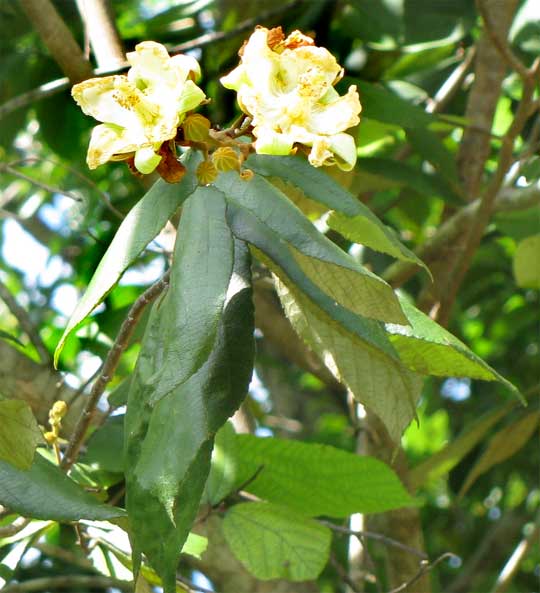
Northerners familiar with Lindens, or Basswoods, may find it hard to believe that those large, showy blossoms are produced on a tree in the Basswood Family, the Tiliaceae. Basswoods have small flowers. However, once you think about it, the leaves in the picture are similar to those of basswoods. Also, despite the flowers' much greater size, their basic structure is similar to that of basswood flowers-- five sepals and petals, stamens many with some being reduced to sterile staminodia, and a long, slender style inside the stamen cluster. You can see a Luehea blossom, with its typical bruised-looking petals, below:
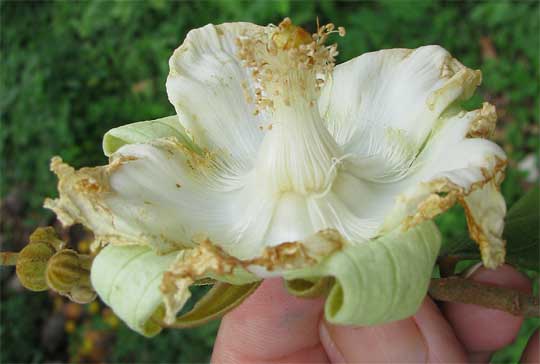
In that picture, note the flat clusters of white, hairlike staminodia curving along the corolla's bowl- shaped floor. They're very conspicuous and give the blossoms an exotic look, but who knows what they're for? Maybe they're footholds for pollinators who land inside the fragrant flowers. And who knows why it's typical for the large, white petals to have those messy-looking, bruised fringes, but that condition seems to be typical of all its flowers.
from the June 19, 2016 Newsletter issued from Hacienda Chichen Resort beside Chichén Itzá Ruins, central Yucatán MÉXICO
LUEHEA FRUITS
A good field mark for Luehea speciosa is that its broadly oval leaves are white-hairy below, as shown below:

Nowadays Luehea fruits are turning up, shaped like small, brown, hairy, American-type footballs, as shown
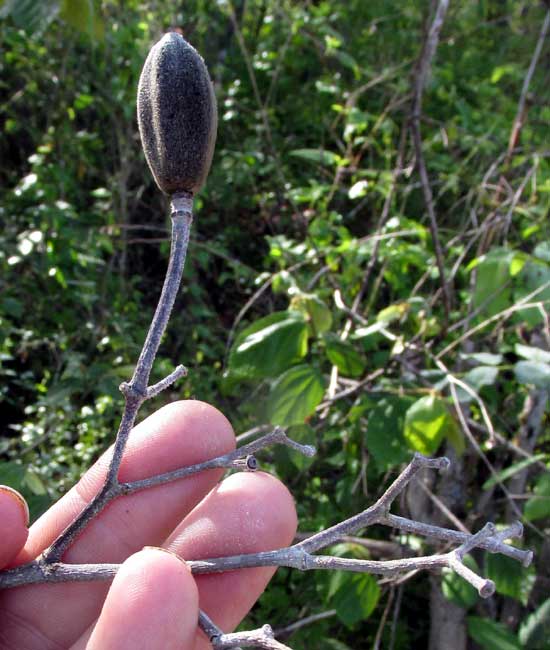
The capsular-type fruit is shallowly ribbed. Another Luehea species occurs in the area, but its fruits are much more conspicuously ribbed. At maturity the capsules split at their far ends into five or so "teeth," which spread apart, allowing seeds to escape from inside the capsule when something such as wind shakes its branch.
Luehea speciosa fairly commonly occurs throughout nearly all of humid, tropical America, and in many places it's regarded as medicinal.
The online Biblioteca Digital de la Medicina Tradicional Mexicana reports that in Veracruz State, to treat diarrhea, one boils three 10x20cm sections of bark in one liter of water, and takes half a cup of the resulting tea three times a day. For snakebite, make the above brew but with an added 20cm of Guaco root. Drink half a cup of that brew every three hours for the whole day. I suppose they know what Guaco is in Veracruz.
from the December 14, 2018 Newsletter issued from Rancho Regensis north of Valladolid, Yucatán, MÉXICO;
elevation ~40m (~130 ft), N~20.876°, W~88.170°
LUEHEA TREES FLOWERING
During a morning jog I was alerted to a tree flowering above the woodland trail by the items shown below, lying on the ground:
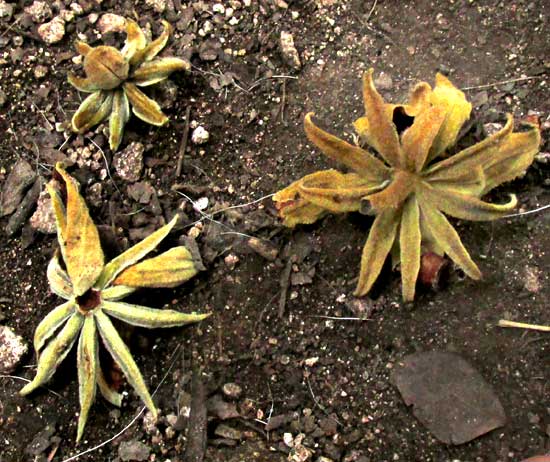
Those are flowers, but not opened ones. The brown petal-like items are bracts spreading below unopened flower buds. I understood why they'd fallen prematurely when every flower bud proved to have been partially or totally eaten, sometimes by insect larvae, other times perhaps by birds pecking at them, or squirrels.
A few of the fallen aborted blossoms retained enough of their stamens and petals for me to recognize that the tree producing them was the Luehea that at this season conspicuously issues white flowers a little smaller than saucers. We've profiled the tree before, but earlier I'd had only blossoms that looked a little weather beaten. This week some fresher looking ones came along on a tree beside the road to Temazón, which you can see below:
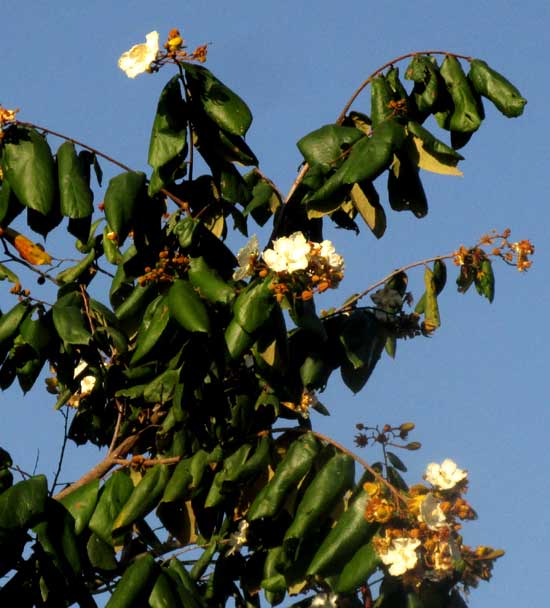
A close-up of a blossom is shown below:
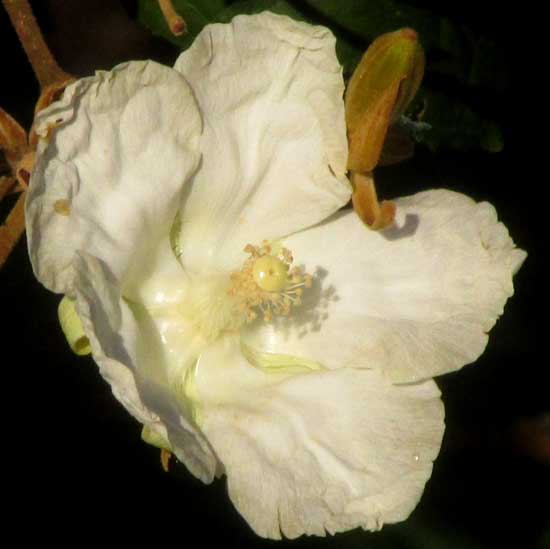
Two similar-looking Luehea species occur in our area and I've had a little doubt about my ID. The most important distinction between the two species is the fruits. Luehea speciosa fruits are only modestly "ribbed," while Luehea candida fruits display prominent ridges along their sides. I never was sure of the boundary between "modestly ribbed" and "strongly ribbed.
However, now I read on W.J. Hayden's fine Flora of Kaxil-kiuic website that Luehea candida flowers early in the wet season (late June or July), while Luehea speciosa flowers late in the rainy season, and we're now in the early dry season not long after the rainy season. This supports my earlier identification.